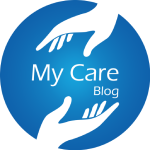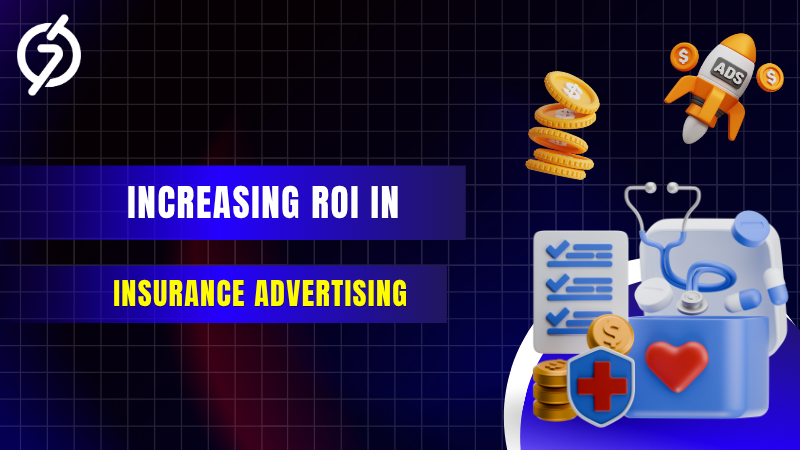In the fast-changing digital landscape, Insurance Advertising has evolved far beyond traditional billboards and cold calls. Today, every marketer in the insurance industry wants the same thing: more qualified leads at a lower cost per acquisition (CPA) and a higher return on investment (ROI).
Yet, achieving this balance is easier said than done. Many insurance marketers struggle to stretch their advertising budgets while still generating quality conversions. Whether you’re running Insurance PPC campaigns, leveraging display ads, or experimenting with social promotions, the challenge remains—how can you spend smarter, not just more?
In this article, we’ll explore actionable strategies to lower CPA while increasing ROI, backed by practical insights for advertisers.
Rising Costs and Tougher Competition
Insurance is among the most competitive sectors in online advertising. According to WordStream’s industry benchmarks, the average cost per click (CPC) in the insurance niche is one of the highest—often exceeding $50 on major platforms. This translates into inflated CPAs, sometimes draining budgets before campaigns even reach maturity.
What makes it more challenging is audience behavior. Consumers now demand personalized experiences and quick comparisons before they commit. The result? Higher ad spend to stay visible and relevant, with fewer conversions to justify it.
Advertisers are not just fighting for clicks; they’re battling for consumer trust in an industry where every lead counts.
Understanding the Root Causes of High CPA
Before optimizing campaigns, it is important to identify what is causing your CPA to rise in the first place. Here are the common culprits:
- Broad Targeting: Casting too wide a net increases impressions but lowers relevance. Generic audiences lead to clicks from people who may never convert.
- Poor Ad Relevance: When your ad copy doesn’t match search intent or landing page content, your Quality Score suffers, and costs rise.
- Weak Conversion Funnel: Even with great traffic, poor form design, unclear CTAs, or slow-loading pages can kill conversions.
- Lack of Data Optimization: Not tracking and refining based on performance data leads to wasted spend on underperforming ads.
Understanding these pain points helps marketers adopt a smarter, data-driven approach to advertising.
Balancing ROI and CPA
Achieving a lower CPA while improving ROI in Insurance Advertising requires a strategic mix of precision targeting, creative optimization, and consistent performance tracking. Let’s explore how advertisers can approach this balance intelligently.
1. Leverage Data-Driven Targeting
One of the biggest advantages of digital Insurance Marketing is the ability to segment audiences based on demographics, location, behavior, and intent. By leveraging tools like Google Ads audience insights or native ad platforms, advertisers can refine their reach.
Instead of bidding on broad terms like “insurance,” focus on specific intent-based keywords such as “affordable life insurance quote” or “car insurance for first-time buyers.” These attract audiences closer to conversion, reducing wasted clicks.
For a comprehensive breakdown of how to build such campaigns, check out this Guide to Insurance Advertising & Lead Generation.
2. Invest in Creative Optimization
Ad creatives can make or break campaign performance. The more your ad resonates with audience intent, the better your Quality Score—and the lower your CPC and CPA.
- Use Emotional Triggers: Insurance decisions are emotional. Focus on protection, peace of mind, and security rather than just cost.
- Test Multiple Variants: A B testing different headlines, images, and CTAs can reveal which version resonates most.
- Align with Landing Pages: Ensure your ad’s promise is fulfilled on your landing page. If your ad says “Compare Car Insurance Plans,” the landing page should immediately present that comparison tool.
This level of alignment not only improves ad performance but also reduces friction in the conversion journey.
3. Implement Smart Bidding Strategies
Platforms like Google Ads or Bing Ads offer automated bidding strategies that help balance CPA and ROI. However, these tools only perform well with sufficient data and clean campaign structures.
For Insurance PPC campaigns, consider using:
- Target CPA bidding to optimize for the lowest cost per conversion.
- Maximize Conversion Value if your goal is not just volume but high-value leads.
- Enhanced CPC to give algorithms flexibility while maintaining control.
Always test and refine. Smart bidding isn’t set and forget—it needs constant monitoring to adapt to trends.
4. Strengthen Retargeting and Remarketing
In the insurance sector, most prospects don’t convert on their first interaction. Remarketing helps bring them back into the funnel at a fraction of the acquisition cost of new leads.
Use segmented remarketing campaigns for users who:
- Viewed your landing page but didn’t fill the form.
- Started a quote but didn’t complete it.
- Visited comparison tools but left mid way.
By personalizing messages “Still comparing life insurance rates?”, you can significantly boost conversion rates without overspending.
5. Focus on High-Intent Platforms
Advertising on niche or high-intent platforms often yields better results than broad networks. For instance, platforms dedicated to finance and insurance audiences, such as Insurance Advertising solutions from specialized ad networks, offer more precise targeting and better ROI.
Such ad platforms focus on contextual relevance—placing your ads where users are already researching financial products. This ensures each click has a higher probability of turning into a lead, reducing your overall CPA.
6. Refine Landing Pages for Conversion
A high-converting landing page is crucial for improving ROI. The goal isn’t just to attract clicks but to turn them into leads efficiently.
Key elements to optimize include:
- Clarity: Ensure the headline instantly communicates your offer.
- Trust Signals: Include testimonials, ratings, or insured by badges.
- Simplified Forms: Shorter forms reduce drop offs.
- Speed: Pages that load within 2 seconds convert significantly better.
Tools like Hotjar or Google Optimize can help you analyze how users interact with your page and identify points of friction.
7. Use Analytics to Drive Decisions
The most effective advertisers don’t rely on guesses; they rely on data. Using analytics platforms allows you to track which keywords, creatives, and channels deliver the best ROI.
Key metrics to monitor:
- Cost per conversion CPA
- Conversion rate
- Customer lifetime value CLV
- Ad spend ROI
By aligning these insights with business goals, you can continuously refine your strategy and eliminate underperforming elements.
8. Incorporate Multi Channel Campaigns
Don’t rely solely on one platform. A combination of paid search, display, and native advertising can expand reach and create multiple touchpoints for prospects.
For instance:
- Google Ads captures active intent searches.
- Native Ads help build trust through content integration.
- Social Media Ads nurture early interest through storytelling.
Blending these channels ensures that your insurance brand remains visible throughout the buyer’s journey, maximizing ROI without ballooning CPA.
9. Optimize for Mobile Users
Over 60% of insurance related searches happen on mobile devices. Yet, many advertisers still design campaigns for desktop first experiences.
Ensure your ad copy, forms, and CTAs are mobile friendly. Implement click to call buttons, easy scroll layouts, and one click quote requests. These small adjustments can reduce drop offs and lead to more efficient conversions.
10. Continuous Testing and Improvement
The key to long term success in Insurance Promotion lies in ongoing testing. No campaign is perfect out of the gate. Track, test, and tweak.
Test ad variations weekly, review placement performance monthly, and re evaluate audience segments quarterly. The constant evolution of data driven optimization is what keeps your CPA low and ROI high.
Smarter Advertising Wins Every Time
Insurance advertisers no longer compete on budget alone; they compete on strategy. Every click, impression, and conversion counts. The difference between a campaign that burns money and one that builds business often lies in how data, creativity, and targeting are blended.
By combining audience insights, smart bidding, relevant creatives, and consistent optimization, you can lower acquisition costs while driving higher returns.
And if you’re ready to take that next step, it might be time to explore how an intelligent ad platform can help you manage and optimize campaigns more effectively.
Launch Your Insurance Ad Campaign Today and experience the difference smart advertising can make.
Key Takeaways
- Precision targeting and audience segmentation lower CPA.
- Creative relevance improves Quality Score and engagement.
- Smart bidding and retargeting amplify ROI.
- Continuous testing ensures sustainable performance.
Insurance Advertising success isn’t about spending more—it’s about spending smarter. With the right mix of technology, creativity, and optimization, every advertiser can achieve lower CPA and higher ROI, even in the most competitive verticals.


 :
: